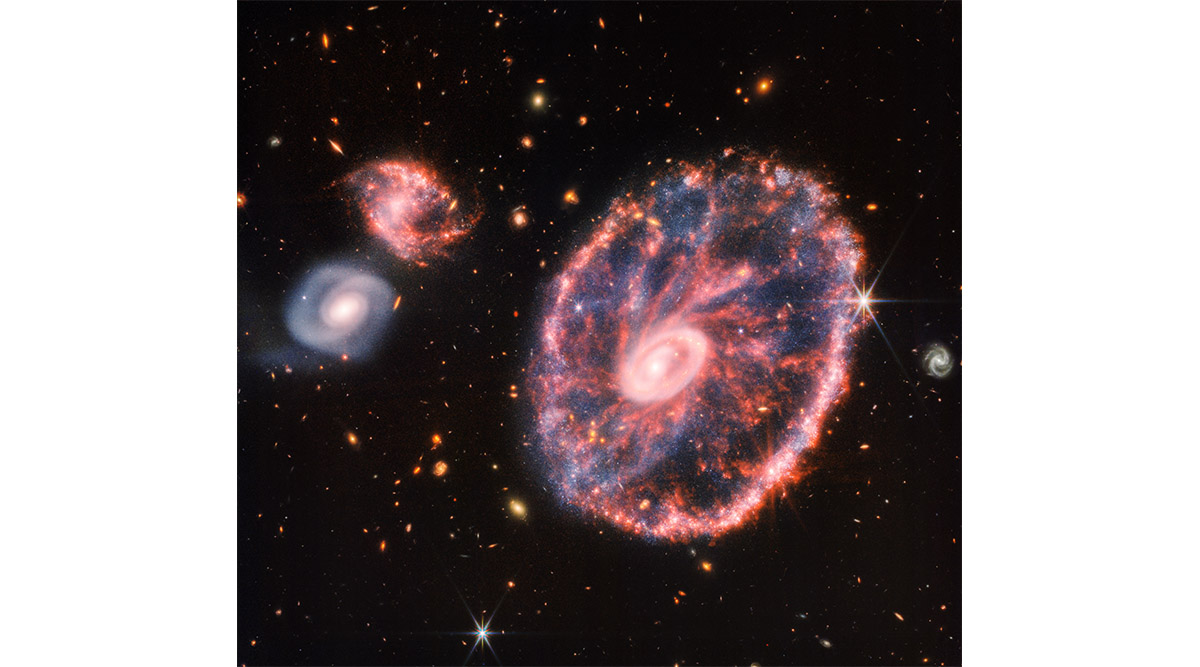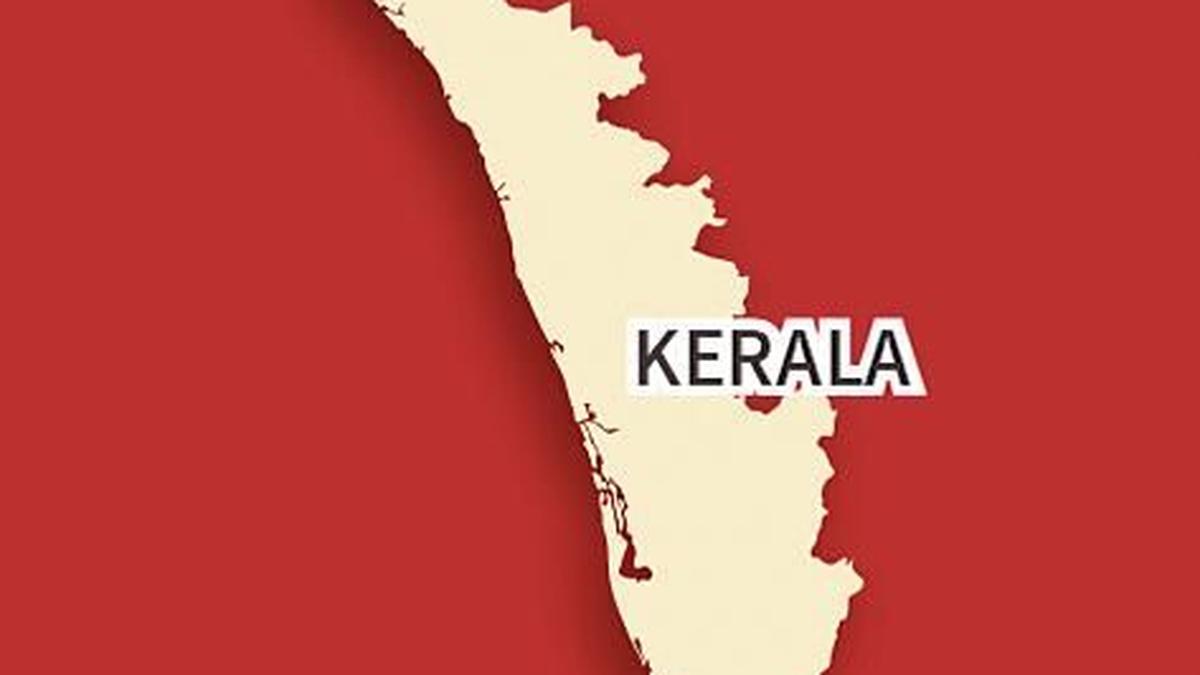NASA’s James Webb Space Telescope has captured this detailed image of the Cartwheel Galaxy and two of its smaller companions using its powerful infrared cameras. Webb looked deep into the chaos of Cartwheel and has helped reveal details about star formation and the central black hole in the galaxy. The latest image from Webb also gives insights into how the galaxy has evolved over billions of years.
The Cartwheel has previously been examined by other space telescopes including Hubble but given the amount of dust that obscures our view of it, the galaxy has been difficult to observe. Webb’s ability to detect infrared light has helped astronomers uncover new insights into the nature of the galaxy.
The Cartwheel Galaxy is about 500 million light-years away from us in the direction of the Sculptor constellation. Its shape, which resembles the wheel of a wagon, is a cosmic rarity and happened as the result of an intense event: a high-speed collision between a massive spiral galaxy and a smaller galaxy not visible in this image.
The galactic collision has had an interesting effect on the shape and structure of the Cartwheel. It has two rings: a bright inner one surrounded by a colourful outer one. Just like how ripples form in a pond when you toss a stone into it, these two rings expand outwards from the centre of the collision. Cartwheel is called a ring galaxy by astronomers due to these features.
Time to reinvent the wheel.
Here’s the Cartwheel Galaxy in a whole new light — as a composite image from 2 instruments on the Webb telescope. Webb uniquely offers not just a snapshot of the galaxy’s current state, but also a peek into its past & future: https://t.co/QdXPwAwwac pic.twitter.com/SJD3wTxwRP
— NASA Webb Telescope (@NASAWebb) August 2, 2022
Great amounts of hot dust contained in the bright core of the galaxy are home to humongous young star clusters. Star formation and supernovas dominate the outer ring, which has been expanding for about 440 million years. The outer ring smashes into surrounding gas and stars as it expands, thereby triggering star formation.
The data from Webb’s observations emphasise how the Cartwheel is in a very transitory stage. The galaxy is presumed to have been a normal spiral galaxy like the Milky Way before the collision.
!function(f,b,e,v,n,t,s)
{if(f.fbq)return;n=f.fbq=function(){n.callMethod?
n.callMethod.apply(n,arguments):n.queue.push(arguments)};
if(!f._fbq)f._fbq=n;n.push=n;n.loaded=!0;n.version=’2.0′;
n.queue=[];t=b.createElement(e);t.async=!0;
t.src=v;s=b.getElementsByTagName(e)[0];
s.parentNode.insertBefore(t,s)}(window, document,’script’,
‘https://connect.facebook.net/en_US/fbevents.js’);
fbq(‘init’, ‘444470064056909’);
fbq(‘track’, ‘PageView’);







